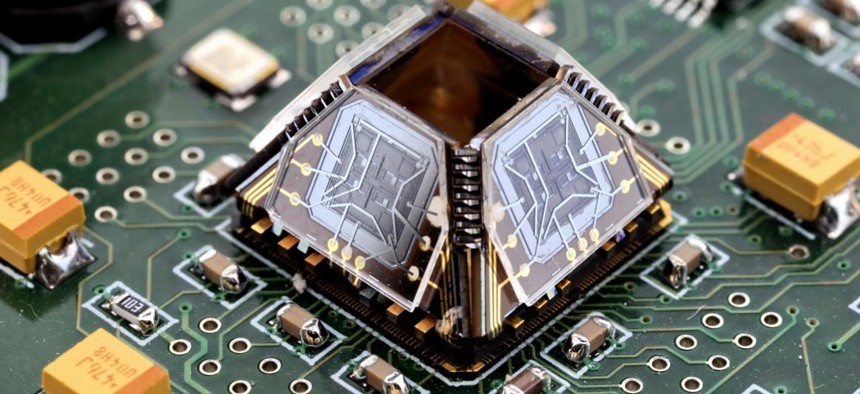
Pentagon awards deal for non-GPS precision guidance
DARPA is funding a project that would leverage MEMS technology to develop small inertial sensors.
The U.S. military has been looking for new ways to reduce its heavy reliance on the Global Positioning System (GPS) to provide precision guidance and navigation for munitions. Military planners worry that GPS dependence creates a critical vulnerability for weapons when signals are degraded by jamming or natural interference.
Those concerns prompted the Defense Advanced Research Projects Agency to begin looking at miniature inertial sensor technology as a way to provide "self-contained" inertial navigation for precise guidance in the absence of GPS.
That translates into cheap, small, low-power positioning, navigation and timing devices capable of operating on the battlefield. To meet the requirement, DARPA's Microsystems Technology Office began soliciting proposals last year for an effort called "Precise Robust Inertial Guidance for Munitions: Advanced Inertial Micro Sensors." The program aims to develop precise navigation for guided munitions "in the absence of external navigation aids" like GPS.
The DARPA office took another step towards reducing the military's dependence on GPS via a contract award this week to HRL Laboratories to develop vibration- and shock-tolerant inertial sensor technology that could eventually deliver the precise guidance and navigation required without relying on GPS.
Under a $4.3 million contract, HRL's Atlas project will combine a micro-electromechanical system (MEMS)-based sensor called a Coriolis Vibratory Gyroscope (CVG) with a frequency reference derived from an extremely accurate atomic clock. The technique is designed to exploit the accuracy of an "atomic hyperfine transition frequency," the research lab said.
"The engineering challenge lies in developing a system architecture to transfer the stability from the atomic reference to the CVG sensor without introducing unintended noise," said Logan Sorenson, principal investigator in HRL’s Sensors and Materials Laboratory.
Boeing and General Motors own HRL Laboratories, which is based in Malibu, Calif.
DARPA noted that recent advances in symmetric MEMS structures, integrated photonics and the use of optics to measure force and position "create new opportunities for novel modalities for sensing rotation and acceleration, the building blocks of inertial navigation.”
The agency added that 2D and 3D MEMS-based platforms using the Coriolis approach could yield advanced, autonomous gyroscopes that could deliver precision guidance equal to or better than current GPS methods.